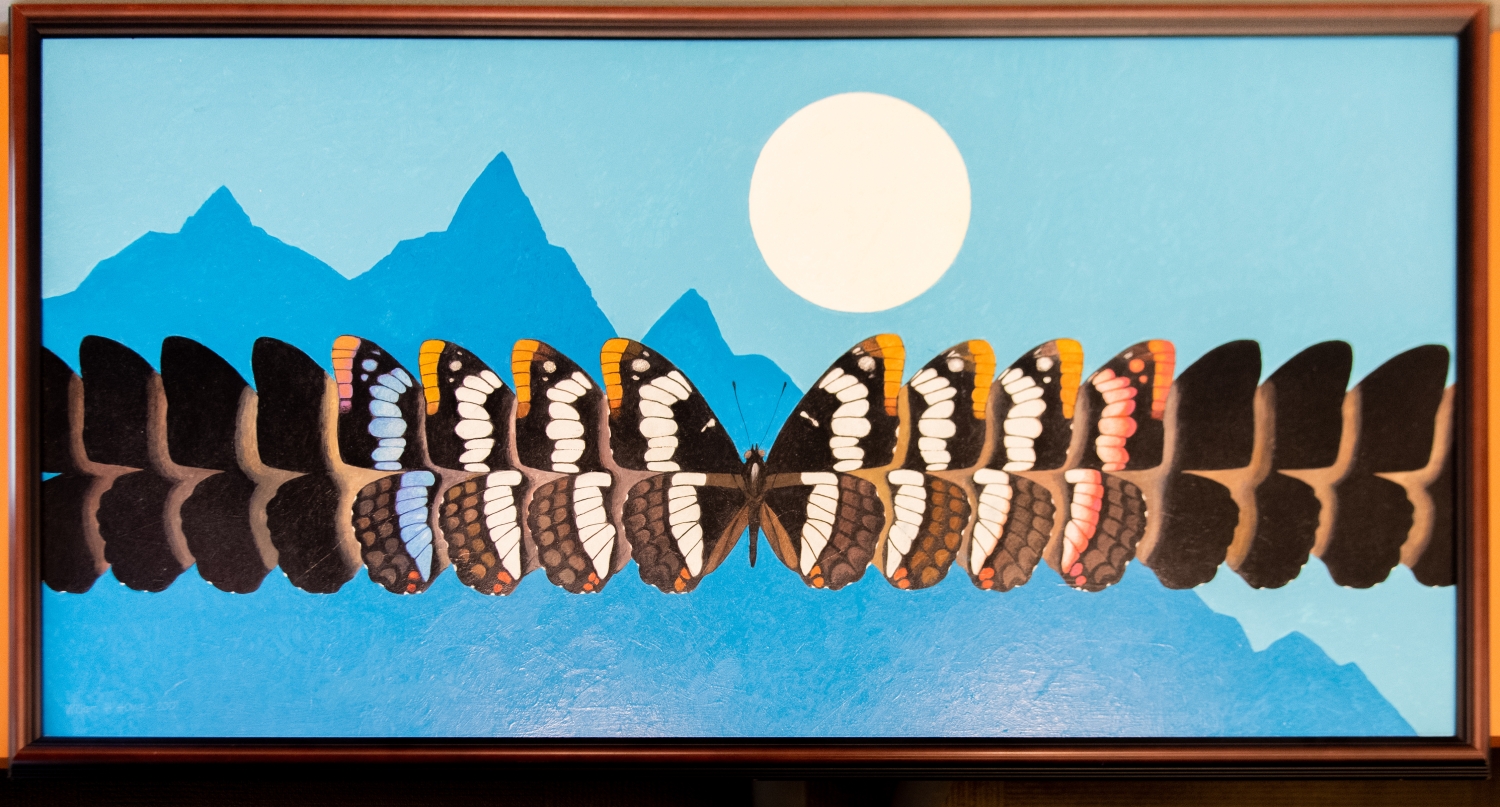Idaho Sunrise
Born in California, Bill Howe lived most of his life in Ottawa, KS, where he conducted a lifelong study of Lepidoptera (butterflies and moths) and translated his studies into paintings. He graduated from Oklahoma University and later studied at the Kansas City Art Institute to develop his command of the watercolor medium used for most of his field studies. The expertise of his work lead him to publish two volumes of North American Lepidoptera titled "Our Butterflies and Moths" (1963) and "Our Butterflies and Moths" (published the same year but is now out of print), which included over 2,000 detailed watercolor studies and was regarded by entomologists as the greatest volume ever published on butterflies in the North American continent. In addition to watercolor, his painting in a number of styles, including pointillism, enlarged imagery, traditional and surrealism, as seen in this work. In Idaho Sunrise, Howe illustrates an Adelpha bredowii (Geyer) butterfly, commonly referred to as a California Sister. It vividly hovers in the middle ground of the image, with subsequent wings spanning both sides across the width of the painting. Each wing grows in vividity until eventually fading to black. Perhaps in taking this approach, Howe means to indicate the lifespan of a single butterfly or a plethora of Monarch’s engaged in the migratory process. The vibrant detail in which Howe depicted the butterfly is contrasted against a minimalist mountainous blue background. A voluminous white sun rising above peaks belonging to the Rocky Mountain system punctuates the serenity of the scene. Howe’s use of the complementary color scheme of orange and blue coupled with the palliative effects of observing nature creates a simultaneously dynamic and soothing work of art.
Howe's productive career has supplied paintings to over 50 museums, universities, libraries, and private collections throughout the United States, Canada, and Mexico.

